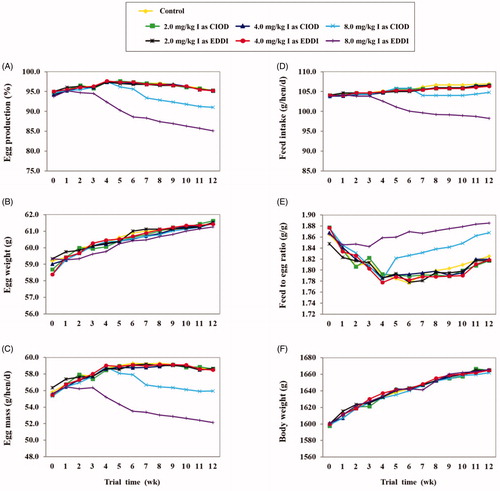Figures & data
Table 1. Ingredients and chemical composition of the basal diet.
Table 2. Feed iodine source, level and analysis for the different dietsTable Footnote*.
Figure 1. Weekly performance as affected by dietary iodine source and level in laying hens (29–42 wk of age). CIOD: calcium iodate; EDDI: ethylenediamine dihydroiodide.

Table 3. Effects of dietary treatments on performance variables in laying hens (30–42 weeks of age).
Table 4. Effects of dietary treatments on external egg quality characteristics in laying hens (29–42 wk of age).
Table 5. Effects of dietary treatments on internal egg quality characteristics in laying hens (29–42 wk of age).
Table 6. Effects of dietary treatments on serum triglyceride and cholesterol levels (29–42 wk of age).
Table 7. Effects of dietary treatments on egg yolk triglyceride and cholesterol levels (29–42 wk of age).
Table 8. Effects of dietary treatments on serum triiodothyronine (T3) and thyroxine (T4) concentrations (29–42 wk of age).
Table 9. Effects of dietary treatments on antioxidant measurements in serum and egg contents (29–42 wk of age).
Table 10. Effects of dietary treatments on iodine contents in egg compartments (29–42 wk of age).
